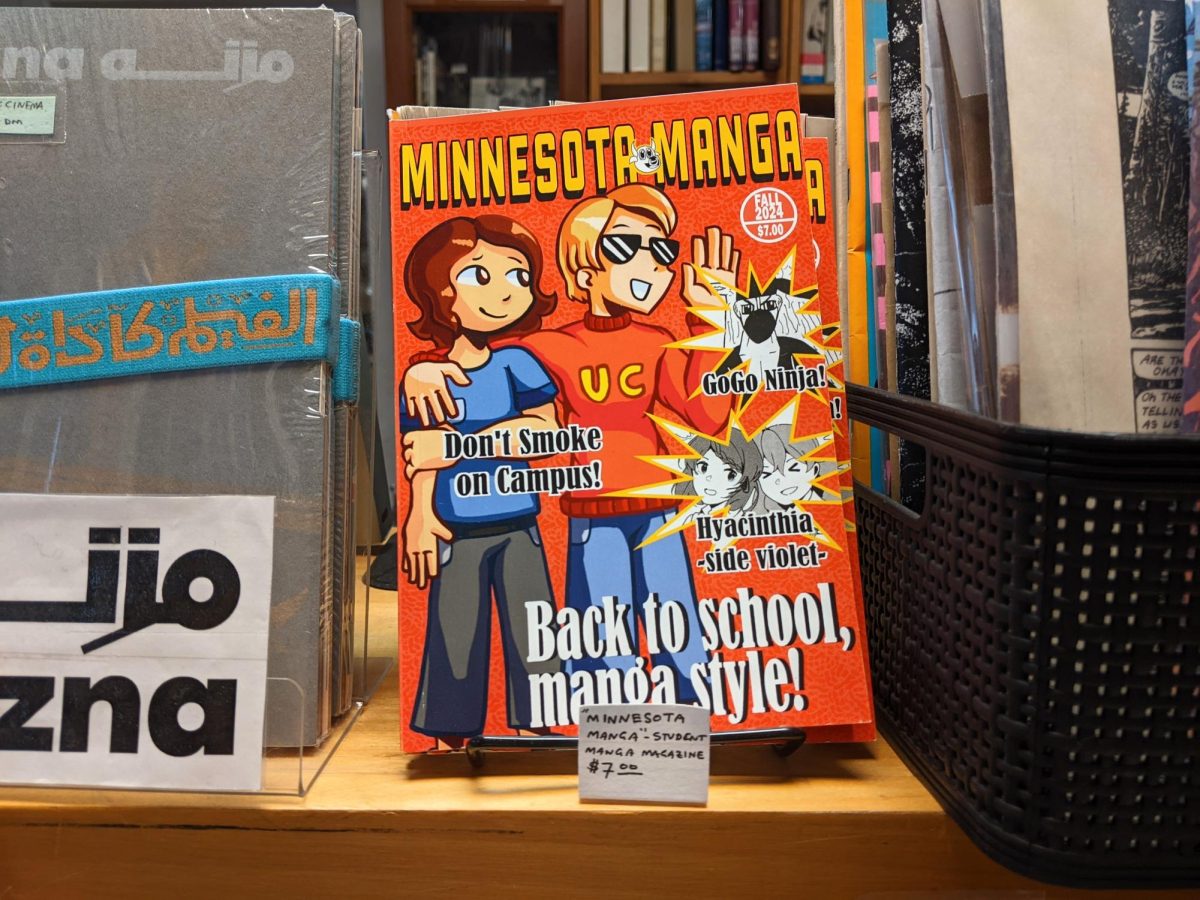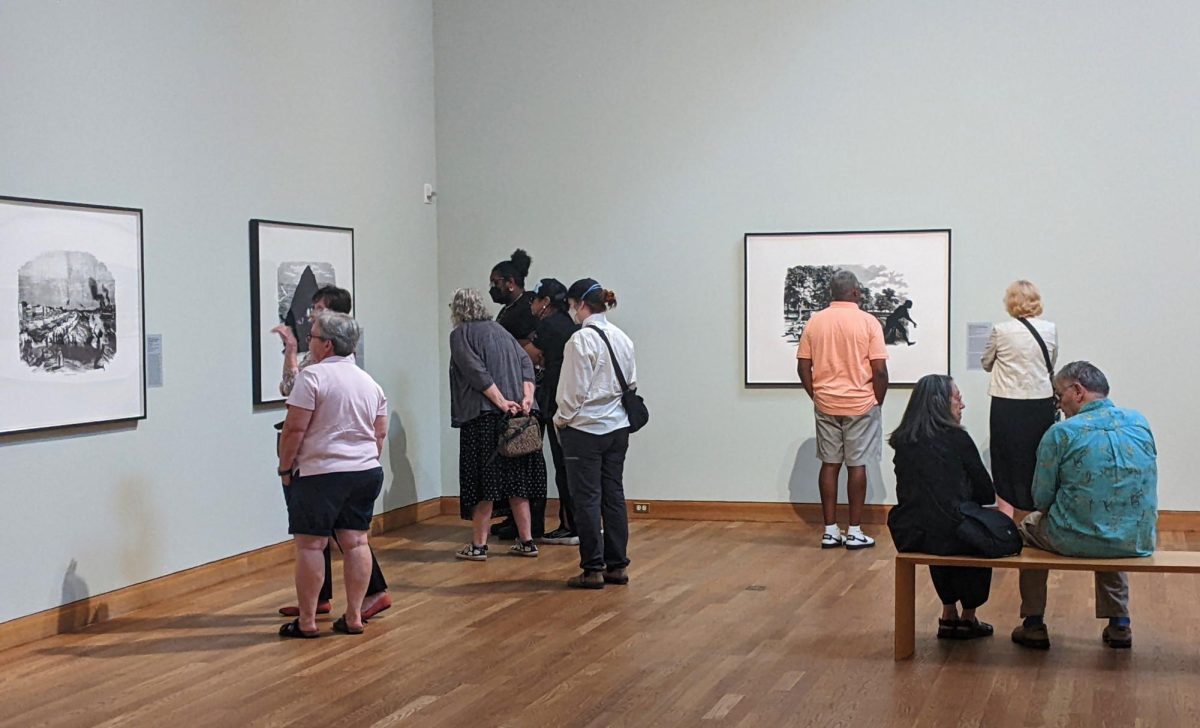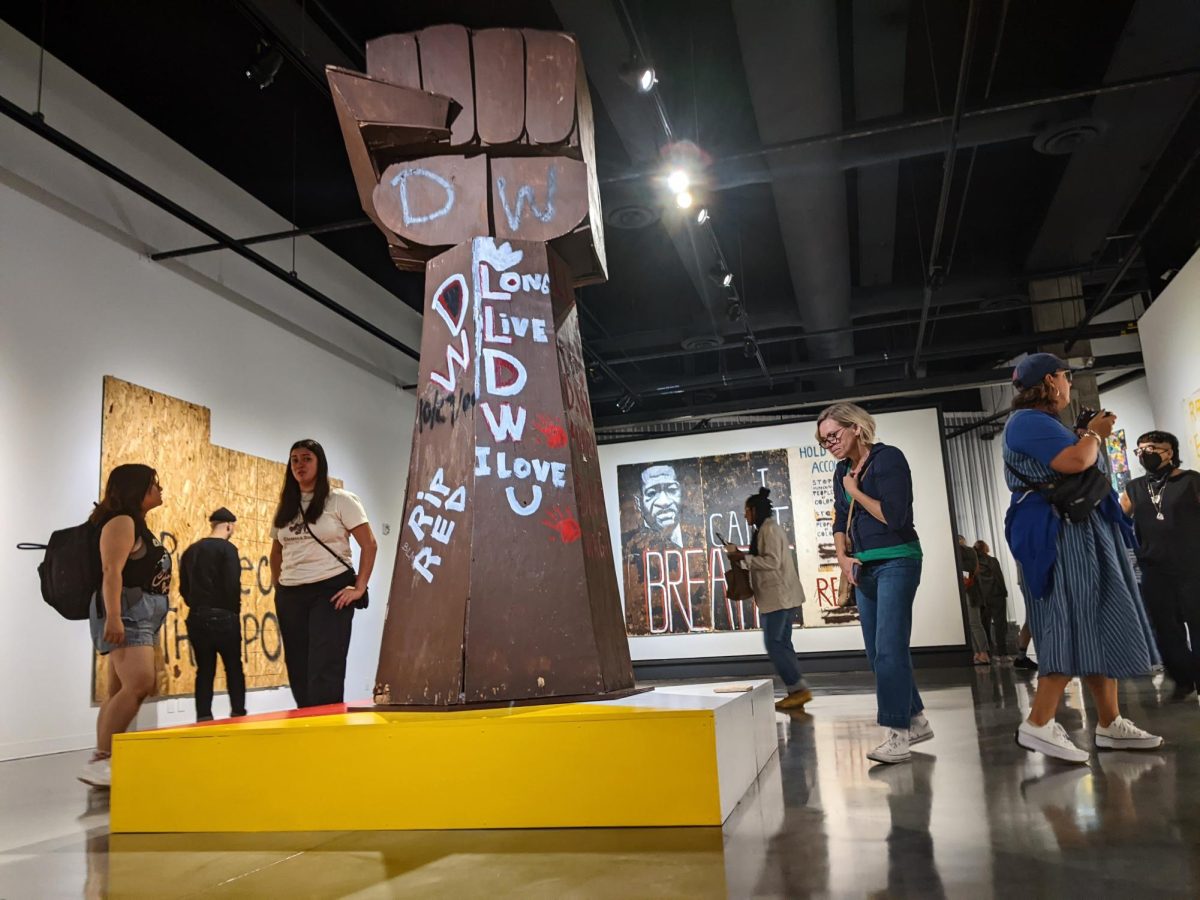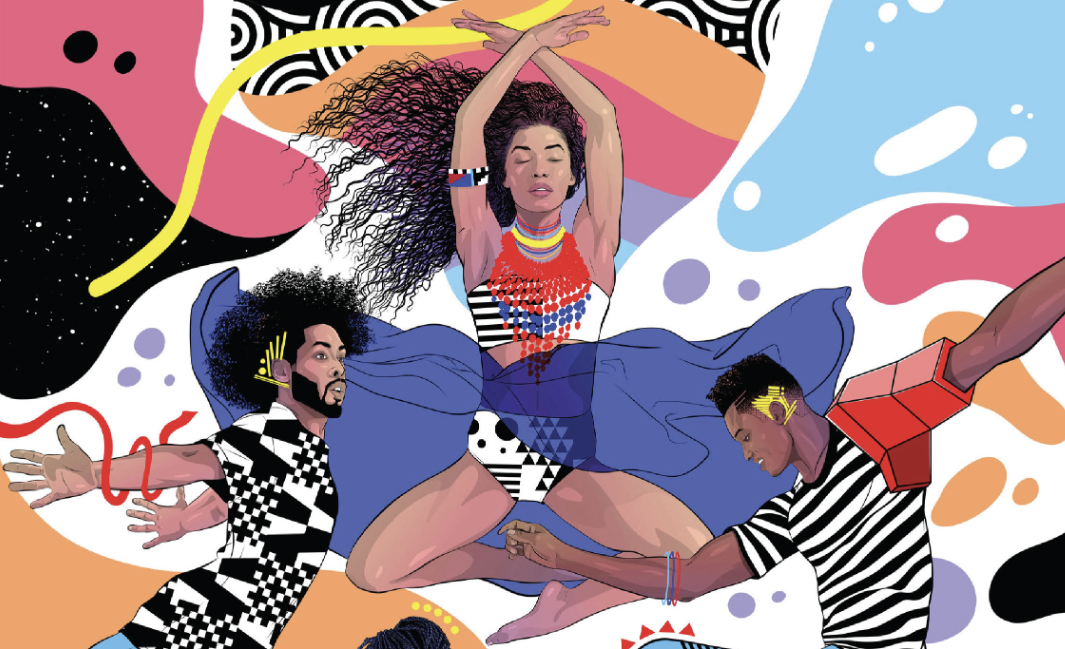There is an exhibit at the Walker Art Center that has invented a name for itself. In fact, its title contains not one, but two neologisms. See if you can spot them – the show is called Ultrabaroque: Aspects of Post Latin American Art.
It is a fun exhibit, despite serious underpinnings. I really wonder about people who cast sideways, suspicious looks at museums, behaving as though the art inside were some preposterous prank, designed to make the uninitiated feel foolish. So much contemporary art is so playful, and museum curators take great pains to make certain that everybody is in on the joke. I can understand some initial trepidation – after all, here is a show, on loan from San Diego’s Museum of Contemporary Art, whose playful, creative spirit has extended to inventing entirely new words. Ultrabaroque? Post Latin American?
But the entry to the exhibit offers immediate definitions, including a rather deft commentary on the colonization of Latin America. The phrase “baroque,” a placard informs us, is often employed – often dismissively – to the elaborate art of the 17th century, which was filled with complex forms, ornamental designs and often grotesque, extravagant or flamboyant images. Not only was the early art of the European conquest of Latin America distinctly baroque, but modern Latin American art is often similarly complex and ornamental. Indeed, as the show’s illustrated catalogue points out, “The mingling of European and American forms produced an intensified baroque, ‘a baroque to the second power’ (this quote comes from Cuban writer Alejo Carpentier) – an ultrabaroque.”
And there we have the definition of the first mystery word, and, wandering the exhibit, anyone with an eye to the showy will recognize that this is an exhibit that revels in it. Even a creature as lowly as the turkey, represented in a series of life-sized models by Venezuelan-born artist Meyer Vaisman (himself of Ukranian and Romanian extraction), has been dressed in gaufy excess for this exhibit. Vaisman’s “Untitled Turkey” series outfits this indigenous American bird in suits, wigs and, in one instance, in feathers and bananas, as though somewhere there is a bird masquerade, with prizes for best costume.
Similarly, two of the Walker’s walls are hung with elaborate tapestries by Vaisman, illustrated in lurid gold, azure, and scarlet thread, meant to evoke the magnificently illustrated tapestries of the 18th century, such as “Les pecheurs,” which is reproduced in the catalogue. “Les pecheurs,” currently on display at the Louvre, shows four American Indians on a riverbank, surrounded by lush native vegetation – an idealized European image of the indigenous American population. One of Vaisman’s tapestries, in the meanwhile, shows an almost Medieval image of two women playing a miniature pipe organ, surrounded by mythical beasts who hold banners emblazoned with crescent moons. It is as though Vaisman has reversed history, and now Latin America was offering a tapestry of an idealized Europe – but there is something especially odd about Vaisman’s teapestry. At the bottom of the image, staring in at it, is a Disney-styled mother goose image under whose upraised tail is a graphic, star-shaped rectum. Standing behind the goose is Jiminy Cricket, umbrella raised, ready to prod the bird’s nether regions.
 he exhibit itself is somewhat less clear on the phrase “post Latin American,” but it is a handy one, and the catalogue provides a wordy, but functional, definition: “This provocative nomenclature reflects the production of a discourse that can account for artistic expression driven by global impulses, that are grounded in historical specificities yet that seek to go beyond them.” In other word, this is a definition that allows the Ultrabaroque exhibit to include artists from locations as diverse as Columbia, Brazil, Chile and Venezuela, because it is possible to find common themes in their work – specifically, these are artists who reflect on the complex history of the European colonization of the Americas, but also look to such things as religious iconography and contemporary popular culture for influences.
he exhibit itself is somewhat less clear on the phrase “post Latin American,” but it is a handy one, and the catalogue provides a wordy, but functional, definition: “This provocative nomenclature reflects the production of a discourse that can account for artistic expression driven by global impulses, that are grounded in historical specificities yet that seek to go beyond them.” In other word, this is a definition that allows the Ultrabaroque exhibit to include artists from locations as diverse as Columbia, Brazil, Chile and Venezuela, because it is possible to find common themes in their work – specifically, these are artists who reflect on the complex history of the European colonization of the Americas, but also look to such things as religious iconography and contemporary popular culture for influences.
As an example, there is Brazilian artist Lia Menna Barreto, whose work frequently employs toys purchased at a local market. One of her eeriest images is the grotesquely oversized “Seeping Doll / Muneca durmiente,” an creature of elongated pink fur arms and legs, with the face, hands and feet of a tiny children’s doll. The stomach of the doll is open, suggesting that it can be used to store things (the image is based on something called a “Pajama bag” doll, where children store their nightclothes), but it is large enough that a child might crawl inside. The doll is hung on the wall like a hunter’s trophy, and the resulting image sends contrasting messages, at once playful and menacing.
In the meanwhile, the work of a fellow Brazilian, Adriana Varejao, resonates with unbridled menace – there is no sense of play here. Varejao, a student of 17th centuty French, Dutch and Portuguese art, has created a series of paintings that superficially look to be idyllic scenes from the period – and, in one instance, a beautifully hand-painted series of tiles. But Varejao has torn these images away from the frame, in one instance cutting segments of a painting out and placing them on decorative plates. Through the holes left by the torn painting, we see glistening viscera, as though we were looking into an open wound. These paintings are disturbing, but astonishingly potent, metaphors. The same metaphor runs through the show, whether handled this bluntly, or with the sort of punning visual sense of Mexican artist Ruben Ortiz Torres, who offers a series of stitched baseball caps, where the names of baseball teams having been subverted. For example, the linked LA in a Dodgers baseball cap form the middle letters of the word “mulatto,” while a Malcolm X cap has been altered to read “Malcolm Mex.”
These are metaphor of cultures in uneasy proximity, where even the most disposable, gaudiest works of culture hide a history of violence and war. And I know this doesn’t sound like the proper subject for the sorts of canny visual jokes made by the Ultrabaroque exhibits’ collected artists, but the best jokes rarely pick the most fitting subjects. Besides, if the history of the European conquest of Latin America were to be approached a soberly as the subject requires, we would have little to do but stand in a gallery and weep bitter tears, and who would want to see that show? No – it might not be proper to laugh and know that you laugh at something terrible, but it is better than not knowing at all.







